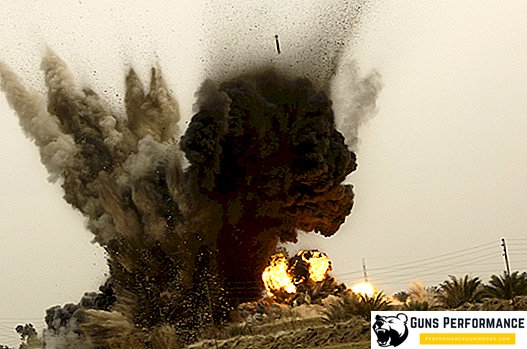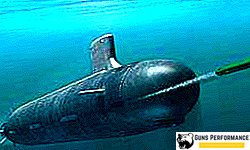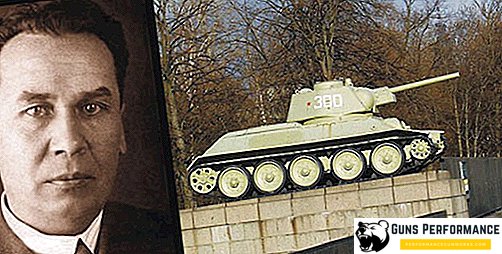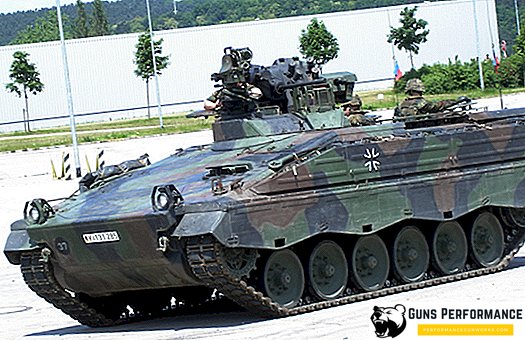
For most of the history, man used all kinds of cold arms to destroy his own kind, ranging from a straightforward stone ax, to very advanced and difficult to manufacture metal tools. Around the XI-XII centuries in Europe began to use guns, and thus humanity became acquainted with the most important explosive - black powder.
It was a turning point in military history, although it took about eight more centuries for firearms to completely force out sharply cut steel from the battlefields. In parallel with the progress of cannons and mortars, explosives developed - not only gunpowder, but also all sorts of compositions for artillery shells or land mines. The development of new explosives and explosive devices continues actively in our days.
Today, dozens of explosives are known. In addition to military needs, explosives are actively used in mining, in the construction of roads and tunnels. However, before talking about the main groups of explosives, it is necessary to mention in more detail the processes occurring during the explosion and to understand the principle of operation of explosives (HE).
Explosives: what is it?

Explosives are a large group of chemical compounds or mixtures that, under the influence of external factors, are capable of a quick, self-sustaining and uncontrollable reaction with the release of large amounts of energy. Simply put, a chemical explosion is the process of converting the energy of molecular bonds into thermal energy. Usually, its result is a large amount of hot gases, which perform mechanical work (crushing, destruction, moving, etc.).
The classification of explosives is quite complicated and confusing. Explosives include substances that decompose not only in the process of explosion (detonation), but also of slow or fast burning. The latter group includes gunpowder and various types of pyrotechnic mixtures.
In general, the concepts of "detonation" and "deflagration" (burning) are key to understanding the processes of a chemical explosion.
Detonation is the rapid (supersonic) propagation of the compression front with the accompanying exothermic reaction in an explosive. In this case, chemical transformations proceed so rapidly and such an amount of thermal energy and gaseous products is released that a shock wave is formed in the substance. Detonation is a process of the fastest, one can say, avalanche-like involvement of a substance in a chemical explosion reaction.
Deflagration, or combustion is a type of redox chemical reaction, during which its front moves in a substance due to ordinary heat transfer. Such reactions are well known to all and are often found in everyday life.
It is curious that the energy released during the explosion is not so great. For example, when 1 kg of trotyl is detonated, it is released several times less than when 1 kg of coal is burned. However, with the explosion it occurs millions of times faster, all the energy is released almost instantly.
It should be noted that the speed of propagation of detonation is the most important characteristic of explosives. The higher it is, the more effective the explosive charge.

To start the process of a chemical explosion, an external factor is necessary, it can be of several types:
- mechanical (puncture, impact, friction);
- chemical (reaction of a substance with an explosive charge);
- external detonation (explosion in the vicinity of the explosive);
- heat (flame, heat, spark).
It should be noted that different types of explosives have different sensitivity to external influences.
Some of them (for example, black powder) respond well to thermal effects, but at the same time they practically do not respond to mechanical and chemical. And to detonate TNT, only a detonation effect is needed. Thundering mercury reacts violently to any external stimulus, and there are some explosives that detonate without any external influence at all. Practical use of such "explosive" explosives is simply impossible.
The main properties of explosives
The main ones are:
- explosion products temperature;
- heat of explosion;
- detonation rate;
- brizantnost;
- explosiveness.
The last two points should be discussed separately. Blasting explosives - this is its ability to destroy the surrounding environment (rock, metal, wood). This characteristic is largely dependent on the physical state in which the explosive is located (degree of grinding, density, uniformity). Brisance depends on the detonation speed of the explosive - the higher it is, the better the explosive can crush and destroy surrounding objects.
Blasting explosives are usually used to equip artillery shells, bombs, mines, torpedoes, grenades and other ammunition. This type of explosive is less sensitive to external factors; external detonation is necessary to undermine such a charge of explosive. Depending on their destructive power, blasting explosives are divided into:
- Increased power: hexogen, tetryl, oxogen;
- Medium power: TNT, melinite, plastid;
- Reduced power: explosives based on ammonium nitrate.
The higher the explosiveness of explosives, the better it will destroy the body of the bomb or projectile, give the fragment more energy and create a more powerful shock wave.
No less important property of explosives is its explosiveness. This is the most common characteristic of any explosive, it shows how this or that explosive has a destructive ability. Explosiveness directly depends on the amount of gases that are formed during the explosion. It should be noted that high-explosiveness and high explosiveness, as a rule, are not related to each other.
High explosiveness and blasting determine what we call the power or force of an explosion. However, for various purposes it is necessary to select the appropriate types of explosives. Brizantnosti is very important for shells, mines and aerial bombs, but explosives with a significant level of high-explosiveness are more suitable for mining. In practice, the selection of explosives is much more complicated, and in order to choose the right explosive, all its characteristics should be taken into account.

There is a generally accepted method for determining the power of various explosives. This is the so-called TNT equivalent, when the power of TNT is conventionally taken as one. Using this method, it can be calculated that the power of 125 g of trotyl is equal to 100 g of RDX and 150 g of ammonite.
Another important characteristic of explosives is their sensitivity. It is determined by the probability of an explosion of an explosive when exposed to a particular factor. The safety of production and storage of explosives depends on this parameter.
To better show how important this explosive characteristic is, we can say that the Americans have developed a special standard (STANAG 4439) for the sensitivity of explosives. And they had to go for it not from a good life, but after a series of extremely serious accidents: 33 people were killed during the blast at the American Bien-Ho air force base in Vietnam, about 80 aircraft were damaged as a result of the Forrestal aircraft carrier explosions, and after the detonation of the aircraft on the aircraft carrier "Oriskani" (1966). So not just powerful explosives are good, but detonating at exactly the right moment - never again.
All modern explosives are either chemical compounds or mechanical mixtures. The first group includes hexogen, trotyl, nitroglycerin, picric acid. Chemical explosives, as a rule, are obtained by nitration of various types of hydrocarbons, which leads to the introduction of nitrogen and oxygen into their molecules. To the second group - ammonium nitrate explosives. The composition of explosives of this type usually includes substances rich in oxygen and carbon. To increase the temperature of the explosion in the mixture are often added powders of metals: aluminum, beryllium, magnesium.
In addition to all the above properties, any explosive should be chemically resistant and suitable for long-term storage. In the 80s of the last century, the Chinese were able to synthesize the most powerful explosives - tricyclic urea. Its power exceeded the trotyl twenty times. The problem was that a few days after manufacturing, the substance decomposed and turned into mucus, unsuitable for further use.
Explosives classification
By their explosive properties, explosives are divided into:
- Initiating. They are used to explode (detonate) other explosives. The main differences of explosives in this group are high sensitivity to initiating factors and high detonation rates. This group includes: explosive mercury, diazodinitrophenol, lead trinitrosorcinate, and others. As a rule, these compounds are used in primers, ignition tubes, detonator capsules, squibs, self-killer;
- Blasting explosives. This type of explosive has a significant level of brisance and is used as the main charge for the vast majority of ammunition. These powerful explosives differ in their chemical composition (N-nitramines, nitrates, other nitro compounds). Sometimes they are used in the form of various mixtures. Blasting explosives are also actively used in mining, when laying tunnels, and carrying out other engineering works;
- Throwing explosives. They are a source of energy for throwing projectiles, mines, bullets, grenades, as well as for the movement of rockets. Powder and various types of rocket fuel belong to this class of explosives;
- Pyrotechnic compositions. Used to equip special ammunition. When burning, they produce a specific effect: illuminating, signaling, incendiary.

Explosives are also divided by their physical state into:
- Liquid. For example, nitroglycol, nitroglycerin, ethyl nitrate. There are also various liquid mixtures of explosives (panklastite, Sprengel explosives);
- Gaseous;
- Gel-like. If you dissolve nitrocellulose in nitroglycerin, you get the so-called explosive jelly. This is an extremely unstable, but rather powerful explosive gel-like substance. He was used by Russian revolutionaries-terrorists at the end of the XIX century;
- Suspensions. Quite an extensive group of explosives, which today are used for industrial purposes. There are various types of explosive suspensions in which the explosive or oxidant is a liquid medium;
- Emulsion explosives. A very popular type of explosives these days. Often used in construction or mining works;
- Solid. The most common group of explosives. It includes almost all explosives used in military affairs. May be monolithic (trotyl), granular or powdered (hexogen);
- Plastic. This group of explosives has plasticity. Such explosives are more expensive than normal, so they are rarely used to equip ammunition. A typical representative of this group is the plastid (or plastid). It is often used during sabotage to undermine structures. By its composition, plastid is a mixture of RDX and any plasticizer;
- Elastic.
Some history of explosives
The first explosive substance, which was invented by mankind, was black powder. It is believed that it was invented in China as early as the VII century AD. However, reliable evidence of this has not yet been found. Generally around the powder and the first attempts to use it created a lot of myths and obviously fantastic stories.

There are ancient Chinese texts that describe mixtures that are similar in composition to black powder. They were used as medicines, as well as for pyrotechnic shows. In addition, there are numerous sources claiming that in the following centuries, the Chinese actively used gunpowder to make rockets, mines, grenades, and even flame throwers. True, illustrations of certain types of this ancient firearm cast doubt on the possibility of its practical application.
Even before the powder in Europe began to use the "Greek fire" - combustible explosive, a recipe which, unfortunately, has not reached our days. "Greek fire" was a flammable mixture, which not only did not quench with water, but even became in contact with it even more flammable. This explosive was invented by the Byzantines, they actively used the "Greek fire" both on land and in sea battles, and kept its recipe in the strictest secret. Modern experts believe that this mixture included oil, tar, sulfur, and quicklime.

Gunpowder first appeared in Europe around the middle of the 13th century and it is still unknown how it came to the continent. Among European inventors of gunpowder, the names of the monk Berthold Schwartz and the English scientist Roger Bacon are often mentioned, although historians have no common opinion. According to one of the versions, gunpowder invented in China, through India and the Middle East, came to Europe. Anyway, already in the XIII century, the Europeans knew about gunpowder and even tried to use this crystalline explosive for mines and primitive firearms.
For many centuries gunpowder remained the only type of explosives that man knew and used. Only at the turn of the XVIII-XIX centuries, thanks to the development of chemistry and other natural sciences, the development of explosives reached new heights.
At the end of the 18th century, thanks to the French chemists Lavoisier and Berthollet, the so-called chlorate powder appeared. At the same time, it was invented "explosive silver", as well as picric acid, which in the future was used to equip artillery shells.
In 1799, the English chemist Howard found "rattling mercury," which is still used in primers as an initiating explosive. At the beginning of the 19th century, pyroxylin was obtained - an explosive that could not only be used to equip shells, but also to make smokeless powder from it.

In 1847, nitroglycerin was first synthesized, but this explosive proved to be too unstable and dangerous for production and storage. A little later, this problem was partially resolved by the famous Alfred Nobel, who proposed to mix nitroglycirin with clay. So it turned out dynamite. This is a powerful explosive, but it is highly sensitive. During the First World War, dynamite tried to equip projectiles, but this idea was quickly abandoned. Dynamite was used in mining for a long time, but nowadays this explosive has not been produced for a long time.
In 1863, German scientists discovered TNT, and in 1891, industrial production of this explosive began in Germany. In 1897, the German chemist Lentse synthesized hexogen - one of the most powerful and common explosives in our day.
The development of new explosives and explosive devices continued throughout the past century, and research in this direction continues today.

In 1942, the American chemist Bachmann received a new explosive similar to hexogen, but much more powerful than him. The new explosive got the name octogen, in its effectiveness one kilogram of this explosive is equal to four kilograms of TNT.
In the 60s, the American company EXCOA offered the Pentagon a new hydrazine-based explosive, which allegedly was 20 times more powerful than TNT. However, this explosive had one noticeable minus - the absolutely nasty smell of an abandoned station toilet. The audit showed that the power of the new substance exceeds the TNT only 2-3 times, and decided not to use it. After this, EXCOA proposed another way to use an explosive: do trenches with it.
The substance was trickled down onto the ground, and then exploded. Thus, in a matter of seconds, it was possible to get a full profile trench without any extra effort. Several sets of explosives were sent to Vietnam for testing in combat conditions. The end of this story was funny: the trenches obtained by the explosion had such a disgusting smell that the soldiers refused to be in them.
In the late 80s, the Americans developed a new explosive - CL-20. According to some media reports, its power is almost twenty times as high as TNT. However, due to its high price ($ 1,300 per 1 kg), the large-scale production of new explosives was never begun.













